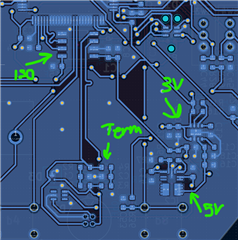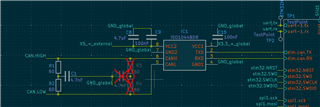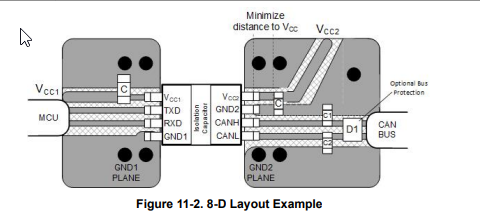Tool/software:
Hi Experts,
Customer is using the ISO1044 to a non-isolated application (GND1 and GND2 connected) but experienced hot issues during start up:
Have used this component in a lot of our products. And because of ease I have used it on boards that does not need the isolation. In one board i have a 5v buck converter that feeds a 3v buck converter and this supplies the card as well as both sides of the can isolator. Should this be an issue?
In this other case where is have the 5v and 3v. Is there any concern with powering them in this way? Because at start-up it gets really hot.
250kbit/s is the speed.
CAN classic mode
For your assistance.
Regards,
Archie A.




